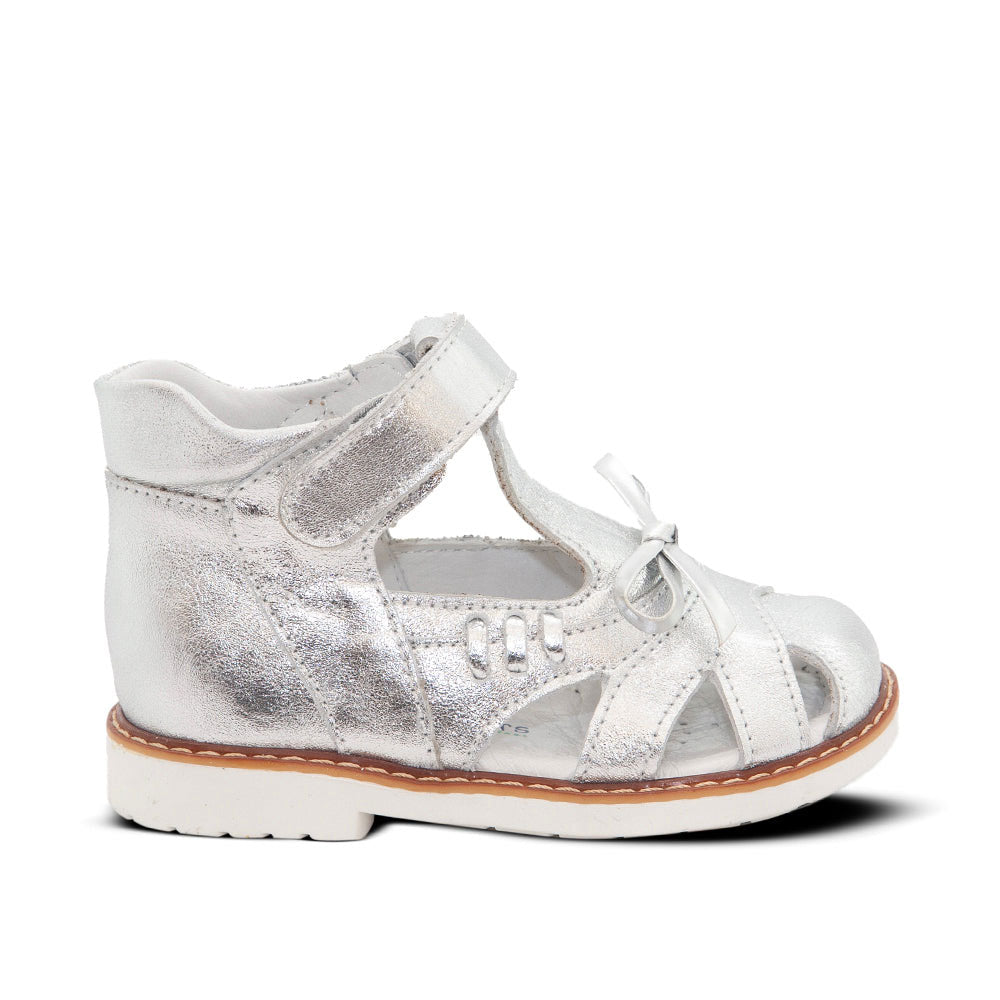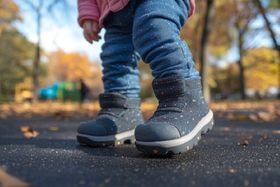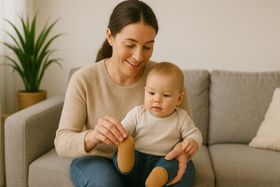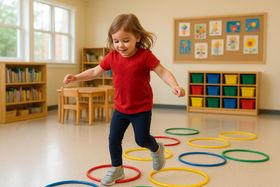5 Simple Tips to Encourage Babies to Walk: From Crawling to Cruising
Babies walk independently between 10 and 18 months old, with plenty of normal variation in timing. You can encourage your baby to walk by providing lots of floor play time, creating safe practice spaces, and letting them develop confidence at their own pace.
Updated October 14, 2025
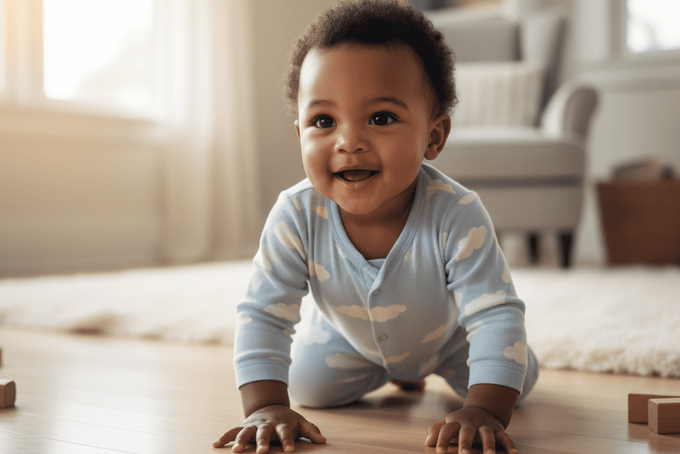
Your 11-month-old is cruising along the couch, moving from cushion to armrest with growing confidence. Now, you're probably wondering if there's anything you should be doing to help them take those first independent steps.
Well, it's important to understand that your baby's body knows what to do. Your job isn't to teach them to walk but to create opportunities for your toddler's development, space for them to practice, and keep them safe.
If you're wondering how to help your baby walk or how to encourage your baby to walk safely, let's go over what actually works and what you should avoid.
When Do Babies Start Walking
Parents often wonder at what age infants start walking. Most babies walk independently between 10 and 12 months old, though the normal range extends from 9 to 18 months.
The CDC and World Health Organization recognize 18 months as the benchmark, meaning about 75% of babies walk by this age [1]. But every baby has their own time and way of doing things, and where your baby falls within this window doesn't predict intelligence or athletic ability.
What Delays Babies From Walking
Several factors can affect gross motor development and walking timelines.
- Family history of late walking
- Premature birth
- Low birth weight
Environmental factors matter too. Babies need floor time to build the strength and coordination that walking requires. The most important thing to remember is that your baby will walk when they're ready.
5 Ways to Encourage Your Baby to Walk
1. Give Your Baby Plenty of Floor Play Time to Encourage Walking
This is the single most important thing you can do to encourage your baby to walk. Floor play builds core muscle strength, improves coordination, and gives your baby space to practice moving.
- Set up a safe play area with cushioned mats
- Get down to floor level yourself and remove any hazards you see
- Use safety gates to keep your baby in the space if you need to
- Spread out favorite toys and encourage your baby to move toward them. Balls, blocks, and teething toys work well. The goal is to get them moving in a fun, no-pressure way.
Don't carry your baby everywhere or keep them in bouncers for long periods. Babies need time on the floor to build the muscles and skills that walking needs.
2. Start Tummy Time Early to Encourage Walking
Tummy time builds the core muscle strength and head control that your baby will need for walking later. It's one of the first types of exercise pediatricians tell parents about.
Many parents struggle with babies who hate tummy time. If you're in this position, try one minute of belly time with each diaper change.
Most babies can handle 60 seconds of tummy time before getting fussy. As your baby gets stronger and more comfortable, slowly add more time to each session.
3. Let Your Baby Walk Barefoot to Encourage Walking
Barefoot walking strengthens foot muscles and helps build a proper foot arch. Feeling the surface underneath improves balance and coordination while giving important sensory feedback.
Wearing shoes actually changes how walking works, affecting stride, stance, and how the foot pushes off the ground. For babies learning to walk, barefoot is best indoors.
Shoes have one main job at this age: protecting feet from injury and weather during outdoor play. You can pick them out early if you like. You can even get shoes for your 6-month-old. But, make sure to pick lightweight ones that have a wider toe box, bend easily, and have non-slip soles.
4. Use Push Toys to Encourage Walking
Sit-in walkers aren't recommended and can actually slow down walking development. They reduce core muscle strength and stop babies from learning to support their full body weight while standing [3].
Push toys can help once your baby is cruising. They let your baby support their own body weight while practicing coordination and building leg strength. This is one of the best ways to help babies walk when they're ready.
When picking push toys, think about where they'll be used.
- Indoor toys should roll easily on your floors. Toys that keep getting stuck on the carpet lead to frustration and falls
- Check the age recommendations and safety warnings
- Look for toys without small parts that could come off and become choking hazards.
Remember to always watch your baby when using push toys.
5. Create Opportunities for Practice to Encourage Walking
Once your baby is cruising regularly, you can encourage them to take a few steps toward you. Hold favorite toys or comfort items within reach to get them to let go of furniture and walk.
Some babies will crawl at first—that's fine. With practice, they'll gain confidence and pick walking instead. Never force it or show frustration if your baby isn't interested yet.
The key is making practice feel like play, not pressure. Your baby should enjoy these activities, not feel stressed by them.
Signs Your Baby Is Ready to Walk
Babies show they're building toward independent walking through predictable steps:
- Your baby pulls to stand by grabbing overhead objects with both hands and using them as leverage
- After getting stable while standing, they cruise by taking steps while holding furniture
- Next comes walking while holding your hand or pushing a toy
- Finally, they take those first wobbly steps without help
Some babies can walk on their own but still hold their parents' fingers for comfort. They're not leaning on you for balance, though; they just like knowing you're there. This shows your baby is building confidence.
Expert Note: Never worry about any delays unless there is a serious cause for concern. Most late walkers I see have no underlying medical issues.
I've had many patients who didn't walk until 14 or 15 months with no diagnosis at all; they were just on their own timeline. By age two or three, you'd never know they started late.
Walking delays don't automatically mean problems. Remember that most late walkers catch up completely.
Supporting Your Baby's Walking Journey
Learning to walk is an exciting milestone that shows your baby is building strength, coordination, and confidence. Most babies walk independently between 10 and 12 months, but your baby's individual timeline is normal for them. The best thing you can do is provide plenty of safe floor time, avoid sit-in walkers, and stop comparing your baby to others.
If you have concerns about your baby's motor development, talk to your pediatrician rather than relying solely on advice from other parents. Trust yourself—you know your child best, and it's always okay to ask for professional reassurance.
As your baby progresses toward independent walking, ensure they have proper footwear like First Walkers' shoes that support healthy foot development. Learn more about choosing the right shoes for babies learning to walk to give your little one the support they need for these exciting first steps.
References
CDC’s developmental milestones. (2025, June 11). Learn the Signs. Act Early. https://www.cdc.gov/act-early/milestones/index.html
Pediatrics, C. (2025, May 1). Delayed milestones in children: When to be concerned. Commonwealth Pediatrics. https://commonwealthpeds.com/delayed-milestones-in-children/
Badihian, S., Adihian, N., & Yaghini, O. (n.d.). The Effect of Baby walker on Child Development: A Systematic review. https://pmc.ncbi.nlm.nih.gov/articles/PMC5703622/
Disclaimer: First Walkers' information is intended for educational and informational purposes related to toddler footwear and feet. We encourage you to consider individual circumstances and consult qualified orthopedists about specific conditions.
FAQs
At what age do infants start walking on average?
Most babies walk independently between 10-12 months old, though the normal range spans from 9-18 months. Every baby develops at their own pace, and variation in this timeline is completely normal.
How can I help my baby walk faster?
You can't speed up development, but you can provide opportunities for practice through floor play time, safe exploration spaces, and age-appropriate activities like cruising and using push toys. Avoid walkers and excessive holding or carrying.
Should I hold my baby's hands to teach them to walk?
Once your baby is cruising, you can hold their hands for support during practice. However, don't pull them up or force walking practice before they're ready. Let your baby initiate walking attempts when their body is developmentally prepared.
Is it normal for babies to skip crawling and go straight to walking?
Yes, some babies skip crawling entirely and go from sitting to pulling up and cruising. As long as your baby shows overall progression in motor skills, the specific order of milestones can vary.
Do baby walkers help babies learn to walk?
No, sit-in walkers are not recommended and can actually delay walking development. They reduce core muscle strength and prevent babies from learning proper balance and weight-bearing. Push toys are a better option once your baby is cruising.

